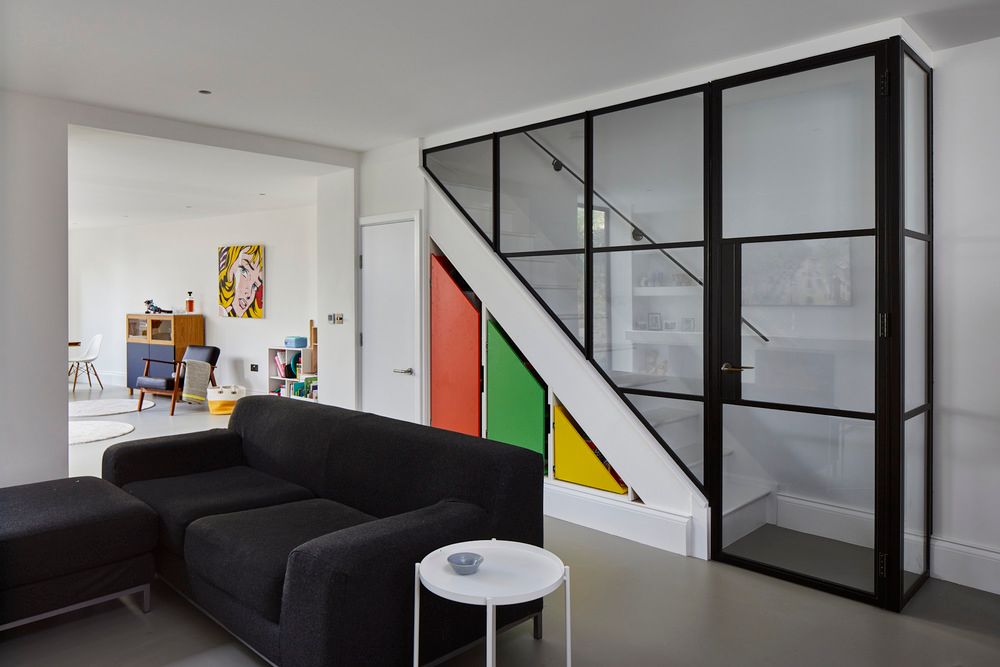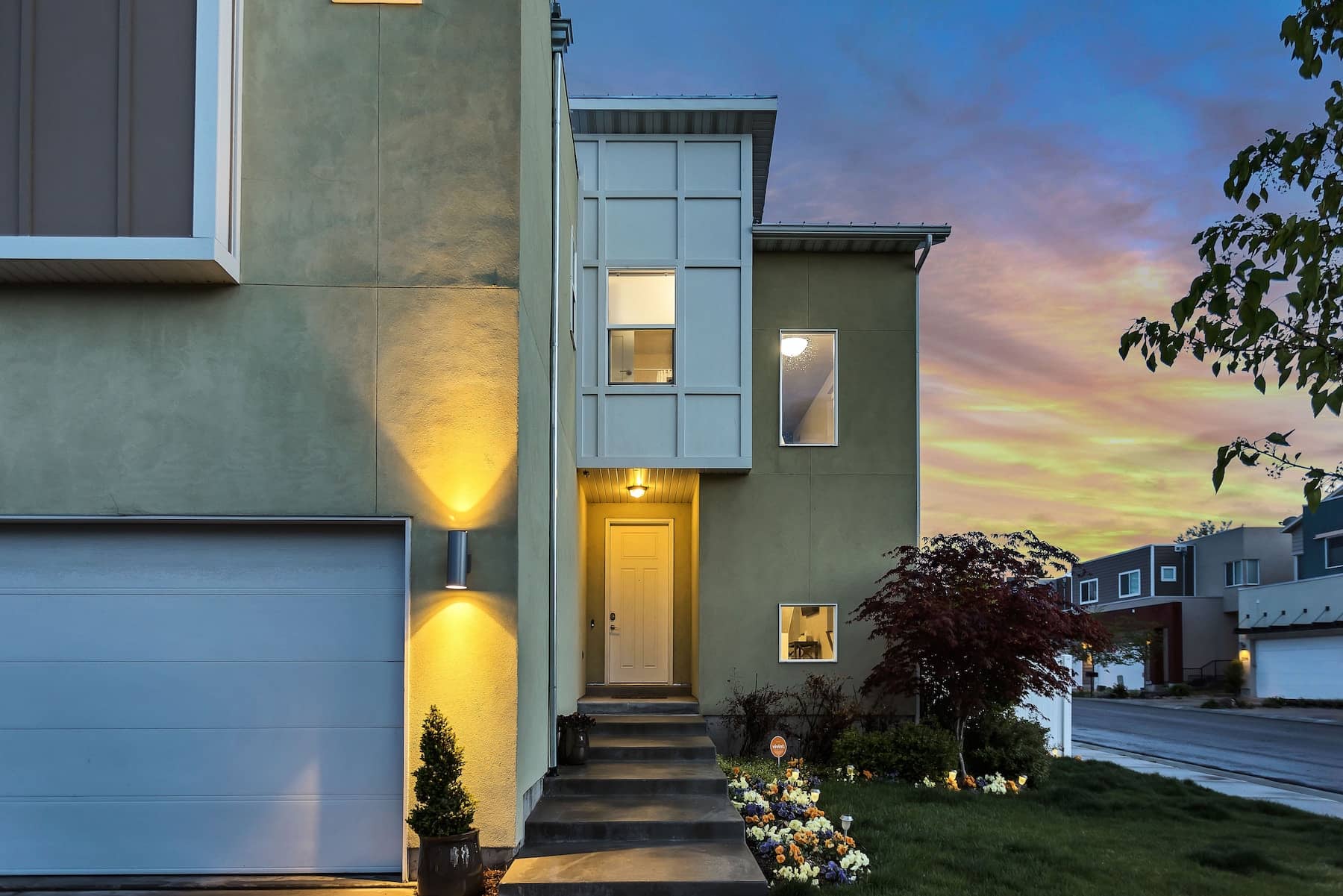A Guide to Timber Frame Extensions
Why choose a timber frame extension?
It is widely agreed that a sleek and seamless extension can be a breathtaking and cost-efficient way to bring extra space and value to your property. A construction method gaining popularity for being more environmentally friendly and budget-conscious is the timber frame extension.
A timber frame extension is a lightweight construction that might not need deep foundations. They are quick to build, versatile in design, and boast economical advantages both in initial construction costs and efficiency over time. What's more, it's considered a more sustainable solution than other frame extensions.
Timber frame extensions can be used for a host of purposes as both single and two-storey extensions. Common requests are to maximise space and bring light to a kitchen or dining area; create a flowing playroom that's accessible from the kitchen and leads out to the garden; enhance the comfort of working from home by incorporating more natural light and green views, to name just a few.
At houseUP we would love to help you realise your unique vision or inspire you with designs of our own.
Do you need planning permission for a timber frame extension?
Planning permission is not usually necessary for a timber frame extension within some regulatory parameters. Most extensions that adhere to the criteria for size, position and outward appearance fall within Permitted Development rights.
Some of the useful Permitted Development regulations to consider when planning process are:
-
The extension cannot use more than half the land surrounding the original building.
-
The extension cannot reach beyond the tallest part of the original building.
-
The structure must be a true extension, not independent of the original building.
-
Forward and side extensions cannot be too close to a highway.
-
Once the extension comes within 2m of the boundary, the eaves cannot exceed 3m.
-
The extension materials must be in keeping aesthetically with the materials used for the exterior of the original house.
-
Semi-detached and terraced properties cannot be extended more than 3m beyond the original rear wall. A detached property is allowed 4m.
-
Double-storey extensions do not fall under Permitted Development rights.
The administration associated with renovations and planning permission can be daunting and overwhelming, especially when loaded on top of day-to-day life. houseUP are happy to take on the responsibility of liaising with local authorities and preparing planning application packages and comes as part of our Design and Build package.
At houseUP, we are committed to safety and compliance and would always seek appropriate permissions before beginning, or continuing, any construction work. Building an extension without planning permission where required can result in the removal of the structure by the local authority.
Types of frame extension
Timber frames are commonly requested for the following extensions:
-
Rear, side, and wraparound extensions
-
Lean-to extension
-
Garage and above garage extension
-
Single and double storey
At houseUP we will design and build a wooden house extension that meets your needs, reflects the desired personality, maximises the use of space and adds market value.
Timber frame extension construction methods
Essentially, there are two types of timber frame construction approaches: stick build and pre-manufactured. Each has their own benefits and drawbacks, but at houseUP, we'd be glad to talk you through both methods in detail and ascertain which would be the most appropriate for your property and project.
A stick built timber frame is constructed onsite a piece at a time using traditional methods and tools. One of the favourable benefits is that this method is marginally cheaper compared to the alternative. This is due to no factory overheads. Another advantage is flexibility and room for creativity. Without a template to adhere to, a stick and build approach can yield an entirely bespoke extension.
However, the disadvantages of stick-built frames are they take more time to construct and project times are more weather-dependent.
A pre-manufactured timber frame is a factory manufactured timber system for onsite assembly. This approach is deemed more energy efficient and has a shorter construction time. Panels come with insulation and are regularly tested in factory-controlled environments ensuring they meet, or exceed, safety standards.
Panels can be open or closed. Closed panels come in varying pre-manufactured levels, i.e. arriving ready-insulated having been tested for thermal efficiency, to including windows, plasterboard and cladding. The higher the level of pre-manufactured value, the greater the efficiency of the build, as less work is required onsite, and the lower the carbon cost and operational costs of the completed structure.
Open panels arrive with the room side of the panel unboarded. Insulation and service runs are then taken care of onsite. The advantages of open panel are it allows for more creative freedom and flexibility, as well as being less expensive than closed panels.
How much do timber frame extensions cost?
It is agreed that timber frame house extensions are comparably less expensive to build than traditionally-built extensions. Naturally, there are many factors that determine the overall cost, such as:
-
the complexity of the project; stick built or pre-manufactured frame
-
single or double storey; a double-storey will certainly require planning permission and incur additional expenses
-
the size of the frame itself
-
permissions costs (if permissions are required)
-
type and quality of materials; the frame, insulation, cladding, doors, windows, structural glass, soundproofing
-
time and labour; tradespeople
-
exterior finishes
However, according to Checkatrade.com, the estimated figure for a timber frame extension between £1,400 and £2,400 per square metre.
Are timber frame extensions cheaper than other materials?
While there are variables to consider, generally, timber framed extensions tend to be more budget-friendly than their brick, steel or concrete counterparts:
-
The construction method is quicker which reduces labour costs.
-
Timber, in particular reclaimed timber, is a more economical building material.
-
There is generally 40% less waste which cuts the cost of disposal.
-
Timber frame extensions are easier to insulate and are more energy efficient making them more cost efficient over time.
Designing a timber frame extension
Designing a timber frame extension is an undertaking with myriad elements to consider. At houseUP, one of our experienced partner architects will design and build your timber frame in close collaboration with you and a designated project manager.
The designer will make plans with your individual taste and priorities in mind. These might be:
-
sustainability
-
energy performance; i.e. thermal efficiency, solar panels
-
light intake
-
area size and use of space
-
materials and exterior finishes
As well as aesthetics and comfort, they will also take into consideration the practical and unseen elements:
-
environment; surrounding trees, roots and other immovables
-
soil type effecting laying foundations
-
climate effecting types of wood selection
-
utilities and service runs
-
site access and waste management
We offer a free site visit to better understand the challenges of the project, place the vision within its environment, collect details and impressions of the neighbourhood and your home, and take the opportunity to discuss your ideas in person. Do not hesitate to contact us.
Does a timber frame extension increase property value?
According to Checkatrade.com, a 20 metre-squared extension can add between 10%-20% to the value of your home, regardless of the frame type. Therefore, a timber frame extension, being the most economical to construct, can offer the greatest added value to your property.
Naturally, there will be variables that will affect the margins, but if the objective is set to maximise value and the project budget is adhered to, receiving a healthy return on your investment is achievable.
Disadvantages of a timber frame extension
While the main advantages of a timber frame extension are very appealing; recyclable materials can be used making it more sustainable; they have better thermal performance and are therefore more energy efficient; rapid construction time, it would be remiss not to discuss some of the potential drawbacks to the method.
The most common doubt is the risk of rot and infestation. It is true, wood is subject to rot, however, timber frames are treated with preservatives to ensure protection and durability against damp and pests. Careful maintenance, such as damp-proofing, cleaning and attention to the frame will improve the longevity of the wood and avoid damage.
Timber frame structures are not as dense as solid masonry, so sound transmission is more likely to occur. As soundproofing specialists, we can offer appropriate soundproofing solutions that will minimise or even eliminate potential disturbances.
It's a common misconception that timber frames are more susceptible to fire risk than other types of frame. Fire-grade plasterboard is applied to panels in both timber-framed, steel-framed and concrete extensions, so timber frame extensions pose no greater risk of fire than any other type.
Each of these potential problems can be easily prevented with diligent planning and safeguarding during the design and build stage, and with careful maintenance by the homeowner thereafter. It is our belief that the benefits of building a wooden extension outweigh the possible drawbacks.
Timber Frame Extension Regulations and Building Standards
Understanding timber frame extension regulations is key to any successful home extension project. While many homeowners focus on design and cost, making sure you comply with building regulations approval is crucial for structural safety and legal requirements.
Building Regulations Compliance
All timber frame structures must meet building regulations regardless of whether they fall under permitted development rights. The construction process requires careful planning to ensure the proposed extension meets structural integrity standards. Local authority building control will assess your drawings and specifications during the design phase.
Key regulatory considerations are:
Structural Safety Requirements: Your structural engineers must prove the existing structure can take the additional load. This involves load calculations and ensuring the new timber frame panels connect to the existing building. Timber frames are lighter than traditional brick extensions so less structural modification to the existing structure is required.
Fire Safety Compliance: Modern timber frame construction has full fire protection. Fire resistance standards require specific fire alarms, escape routes and fire safety materials. Timber frames with proper fire protection meet the same fire risk standards as other materials.
Energy Efficiency Standards: Building regs require specific thermal performance criteria. Timber frames excel in this area when combined with proper insulation. The thermal performance of timber frame panels often exceeds traditional methods.
Movement and Structural Considerations: Timber frame extension regulations cover both horizontal and vertical movement. Movement joints and flexible sealant applications accommodate the movement between the two structures, preventing structural issues over time.
Frequently Asked Questions
- How long does it take to build a timber frame extension?
It takes approximately 4 to 6 weeks to build a single storey wooden extension, 6 to 8 weeks for a double storey extension.
- Are timber frame extensions warm?
Yes. Timber frame extensions can offer good thermal performance with proper insulation and when designed with light intake in mind.
- What is the lifespan of a timber frame extension?
Approximately 25 to 30 years if good-quality structural materials are used.
- What is the most expensive part of building a wooden extension?
The most expensive part will be the construction and material costs, which will also include labour.
The next step in your timber frame extension journey
If you are considering building a timber framed extension and have further questions, we'd love to hear from you. Our partner architects and structural engineers have experience of all types of house extensions in London. This means specific knowledge of local layouts, relationships with local authorities, and extensive experience in permissions applications. Whatever stage you might be at on your extensions journey, we would welcome the opportunity to see it through to the finish with you.
Gen is managing director and chief of digital strategy at houseUP. She has a background in information security and product management in tech startups.

